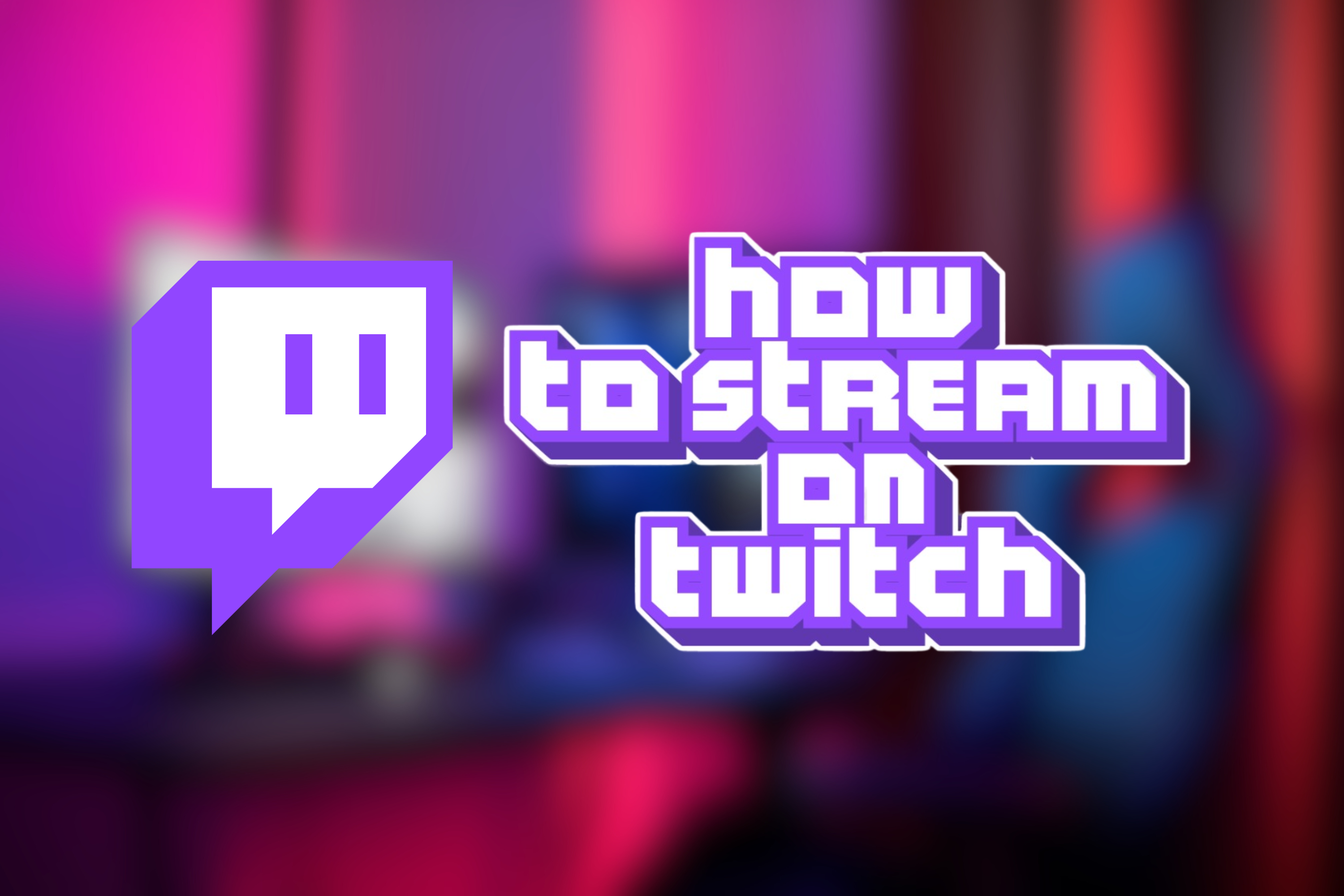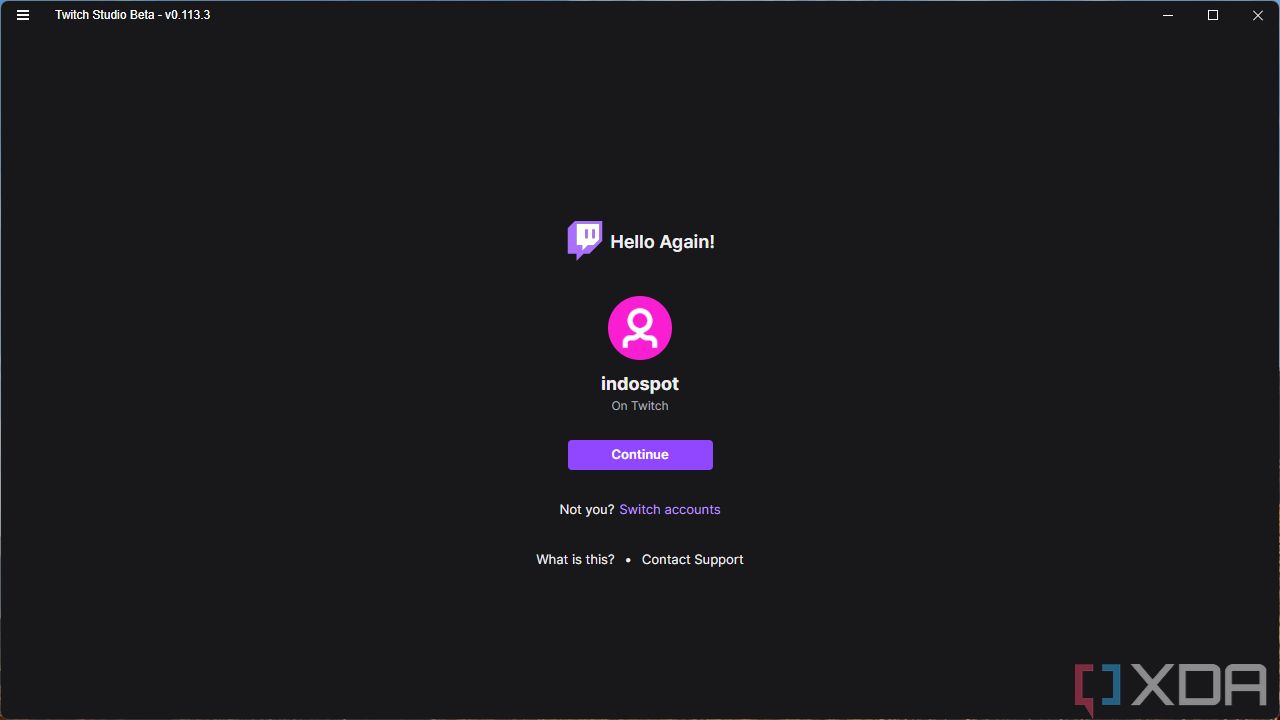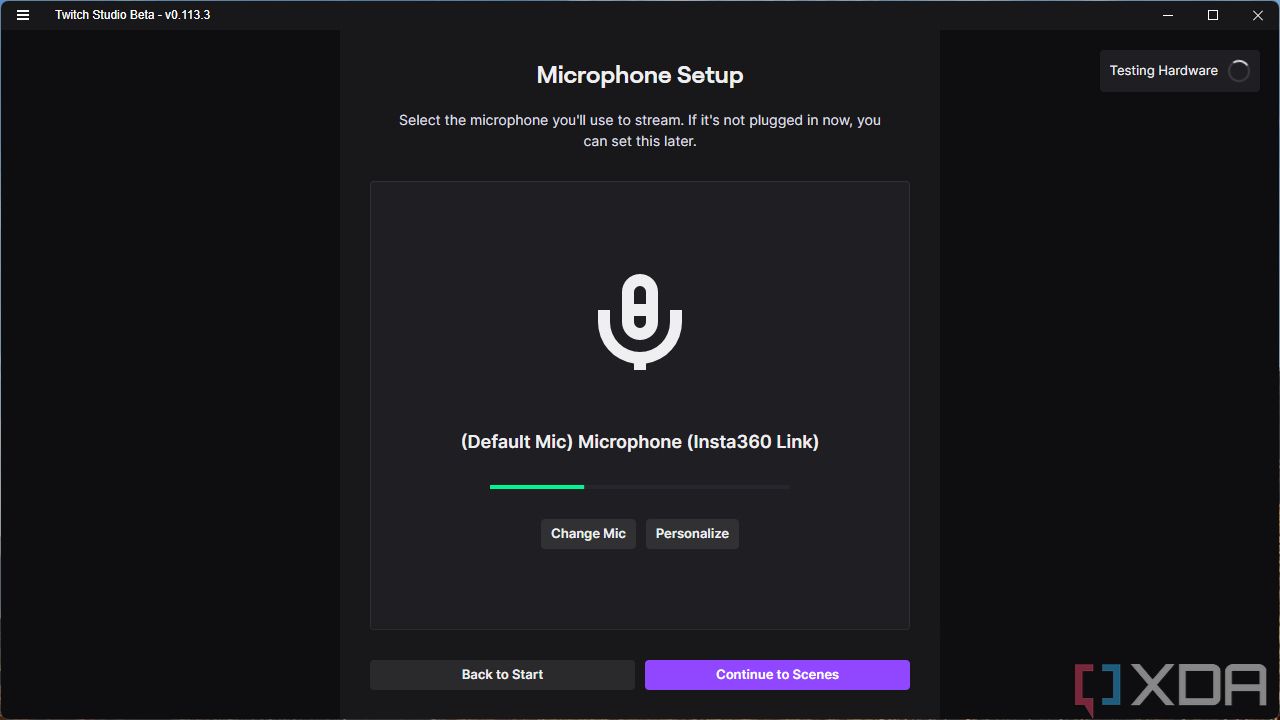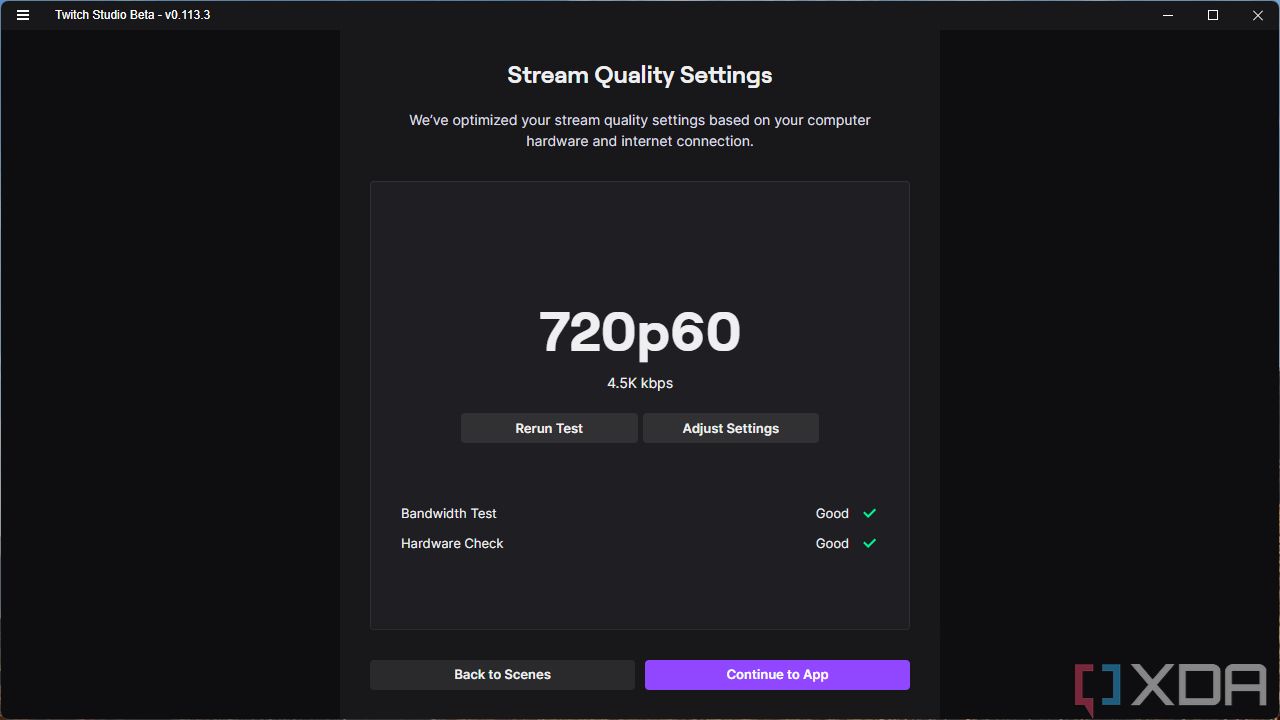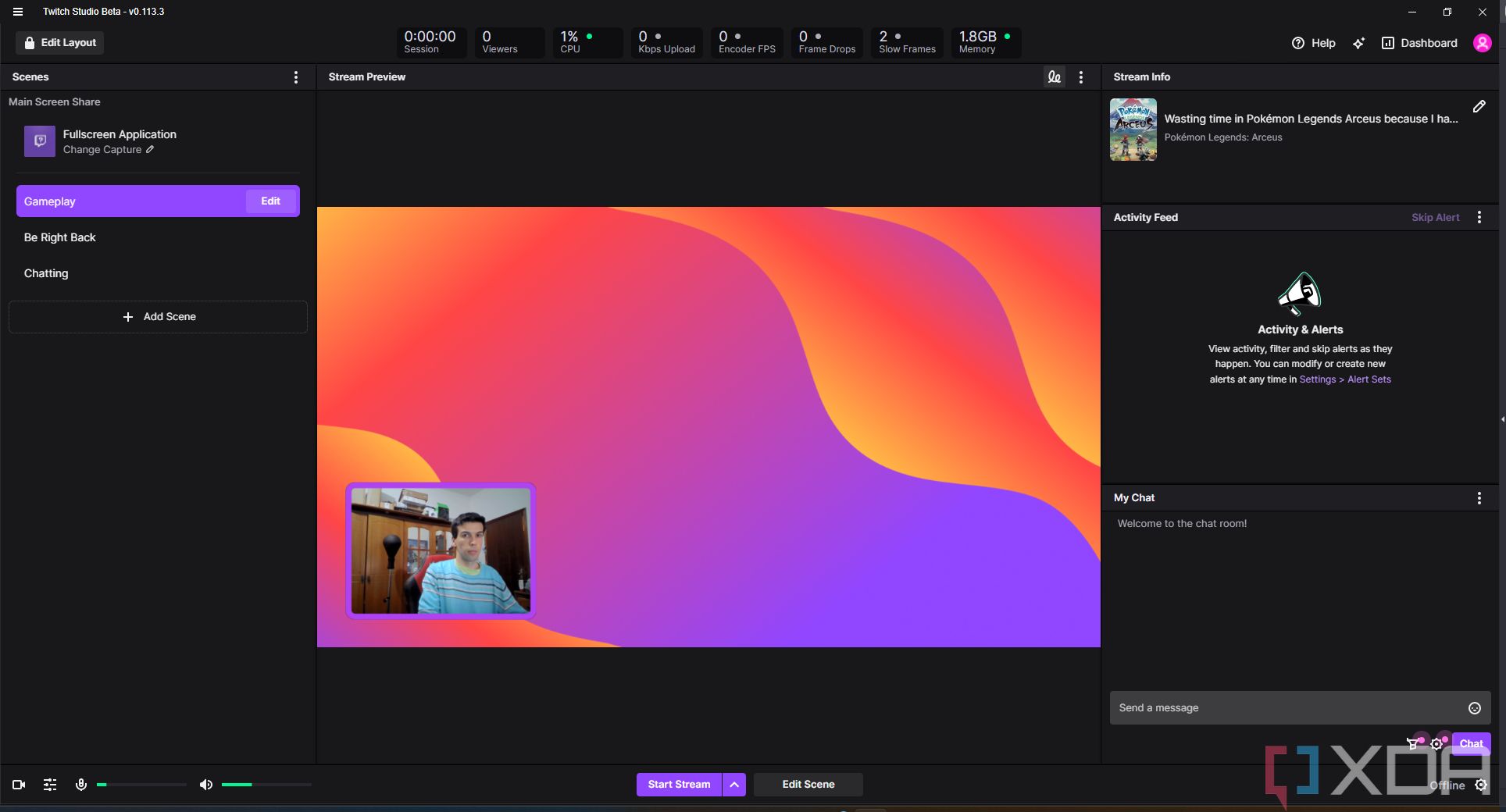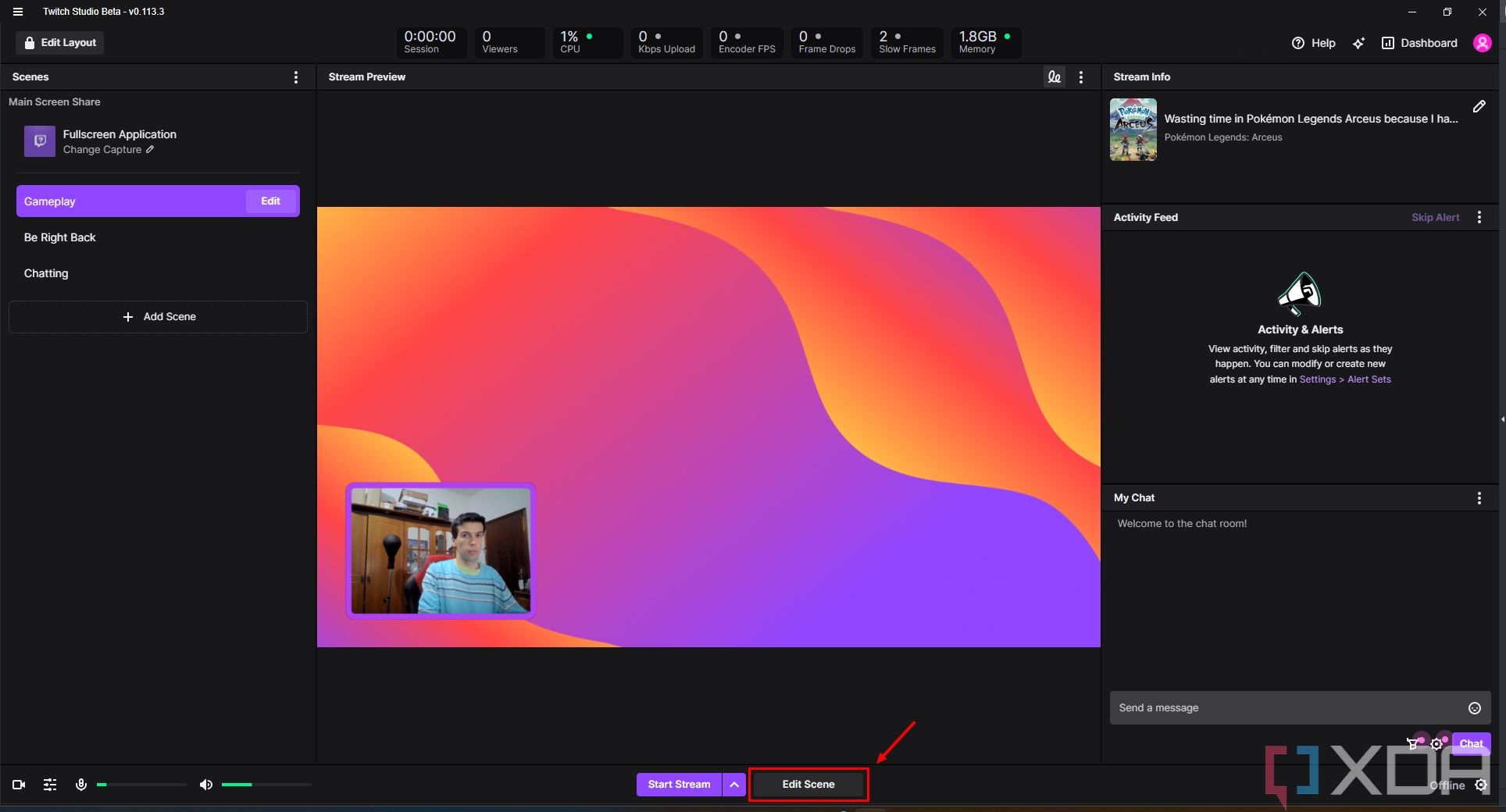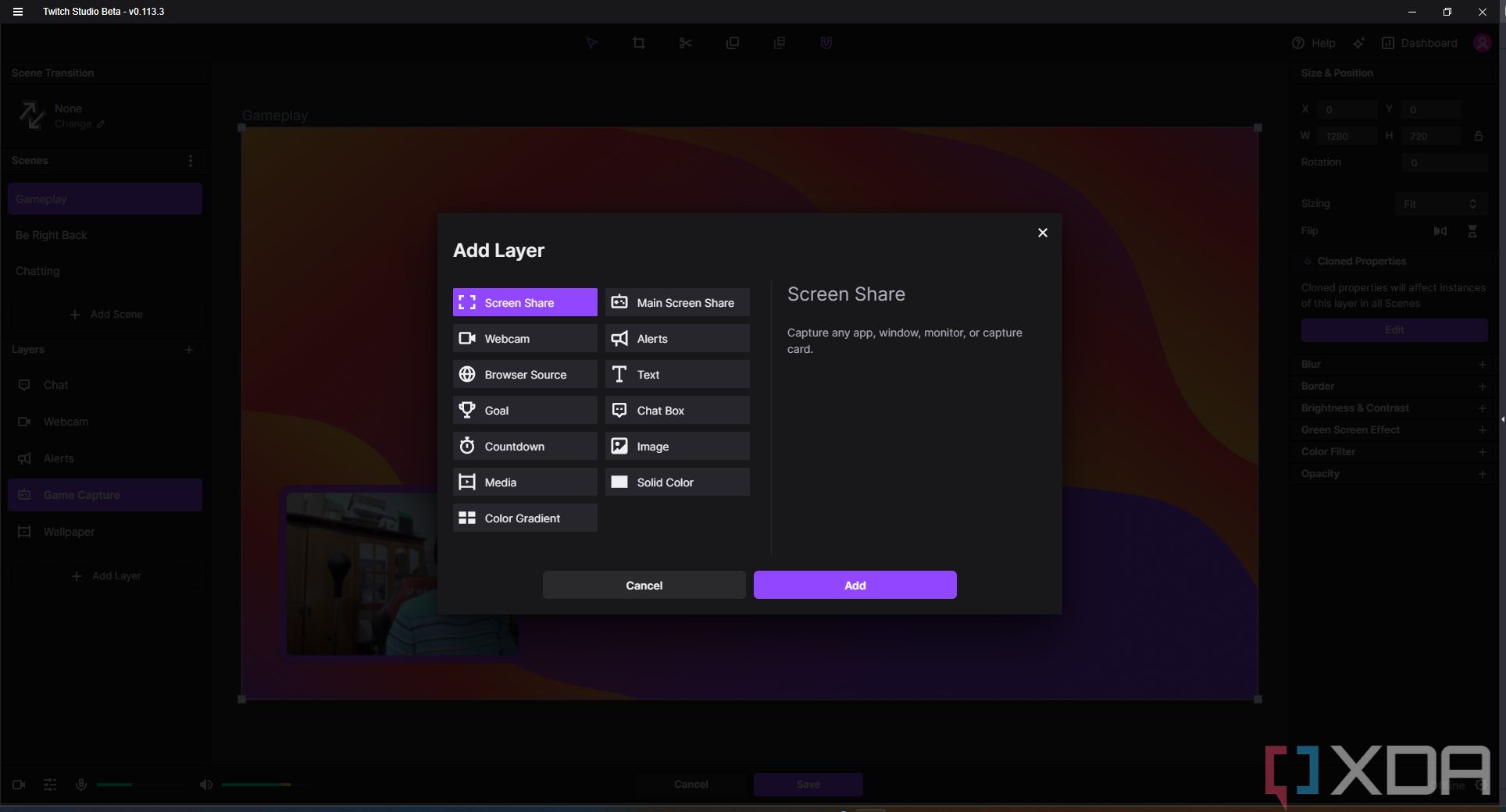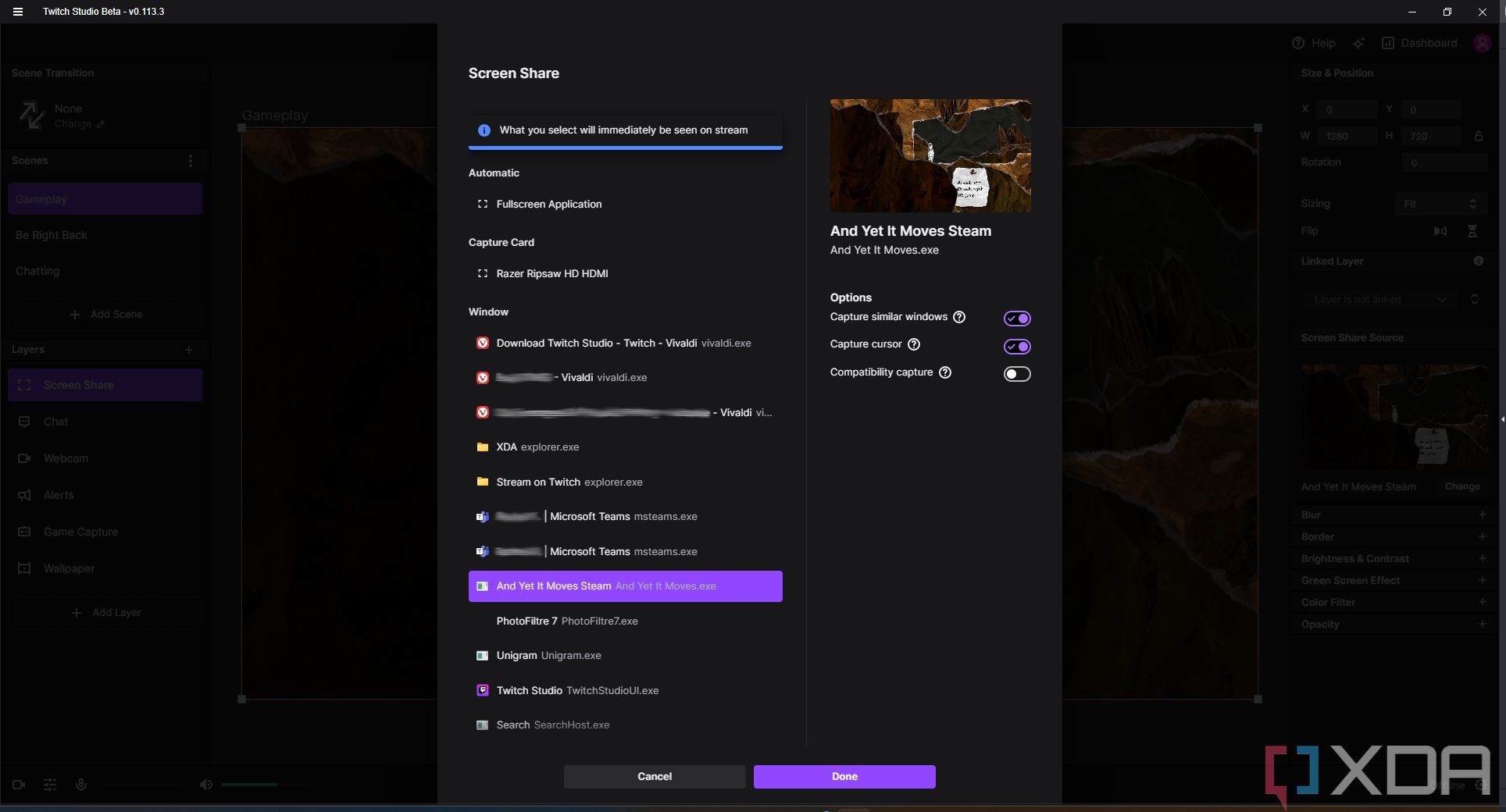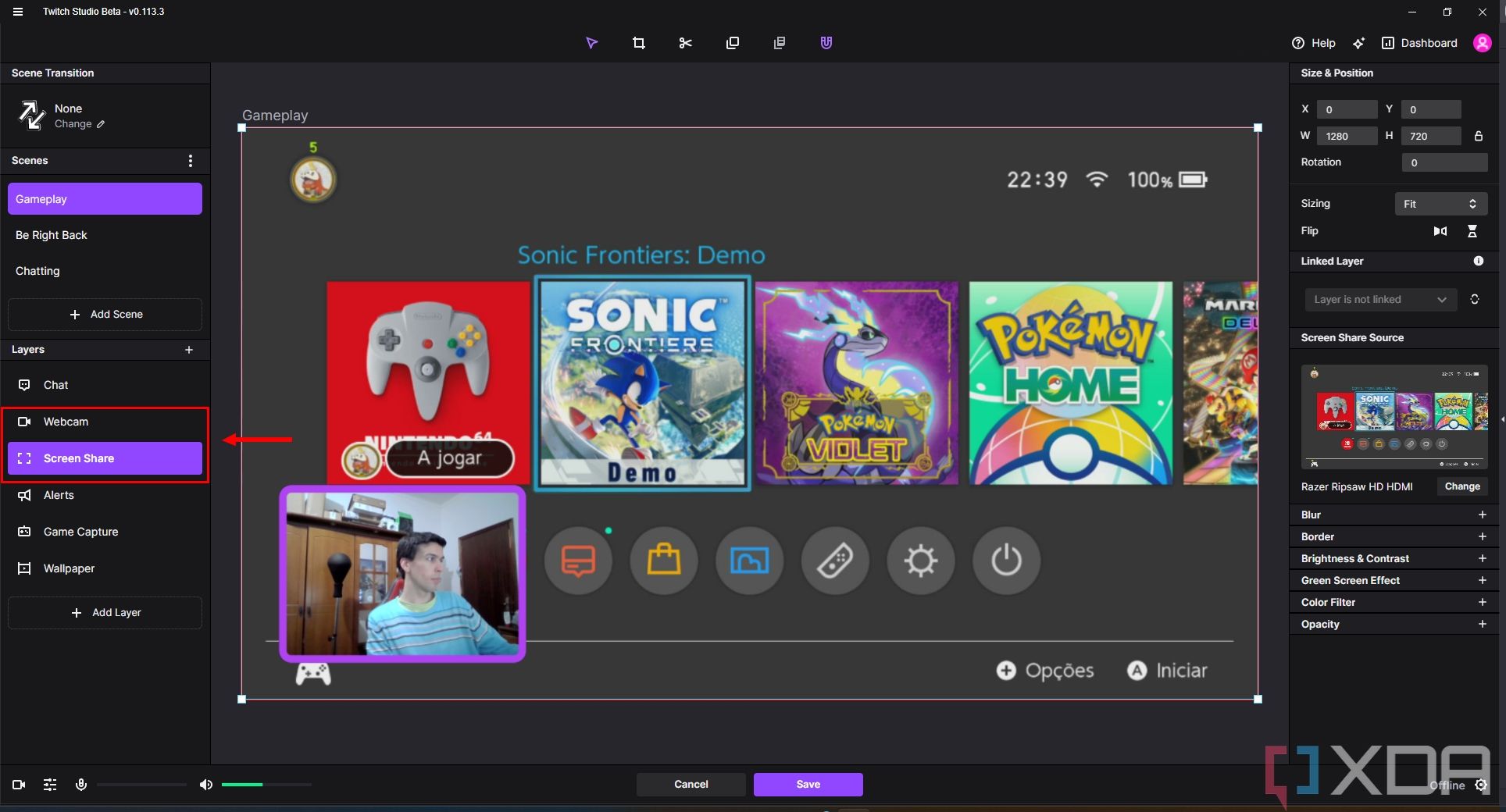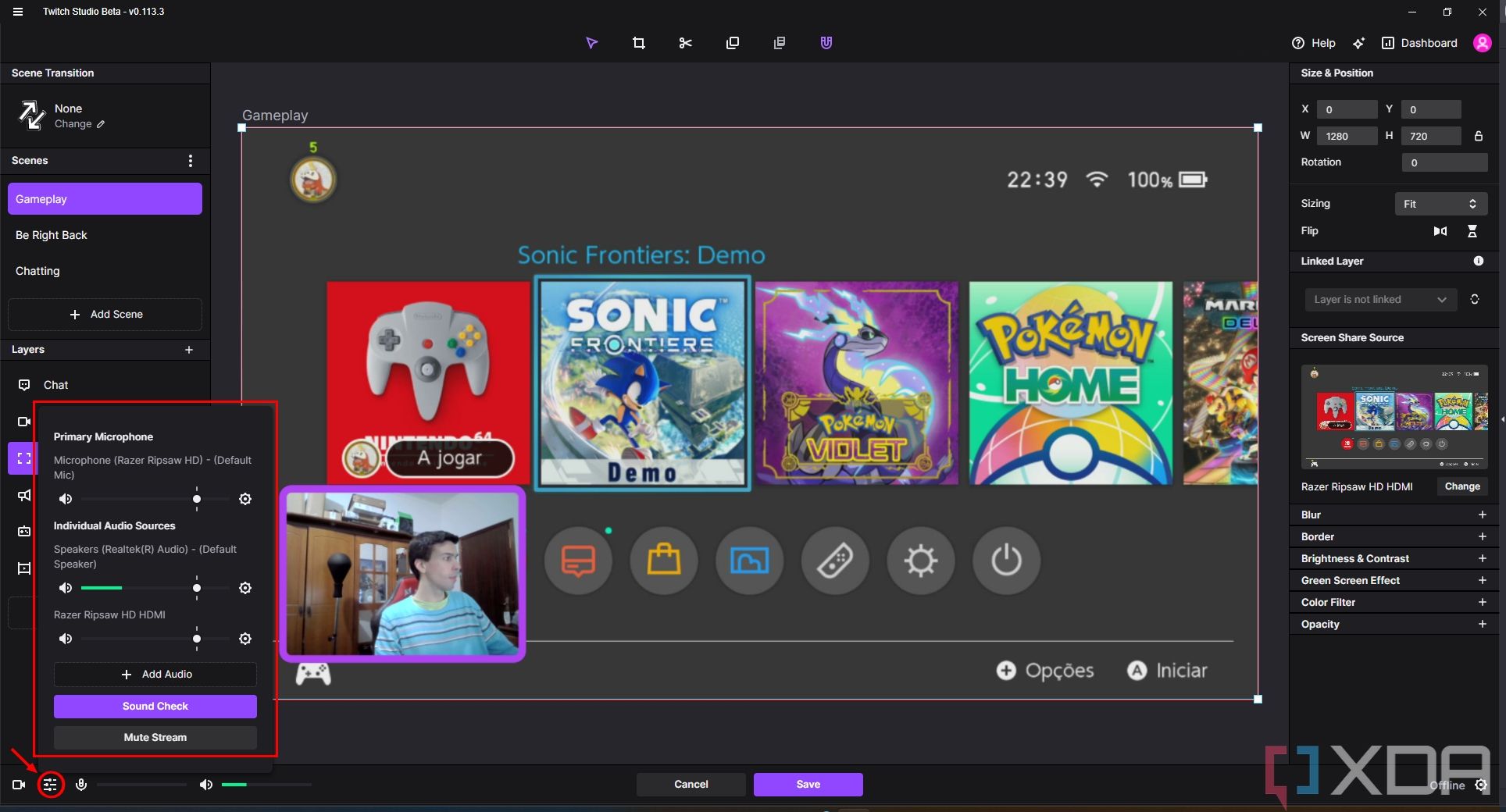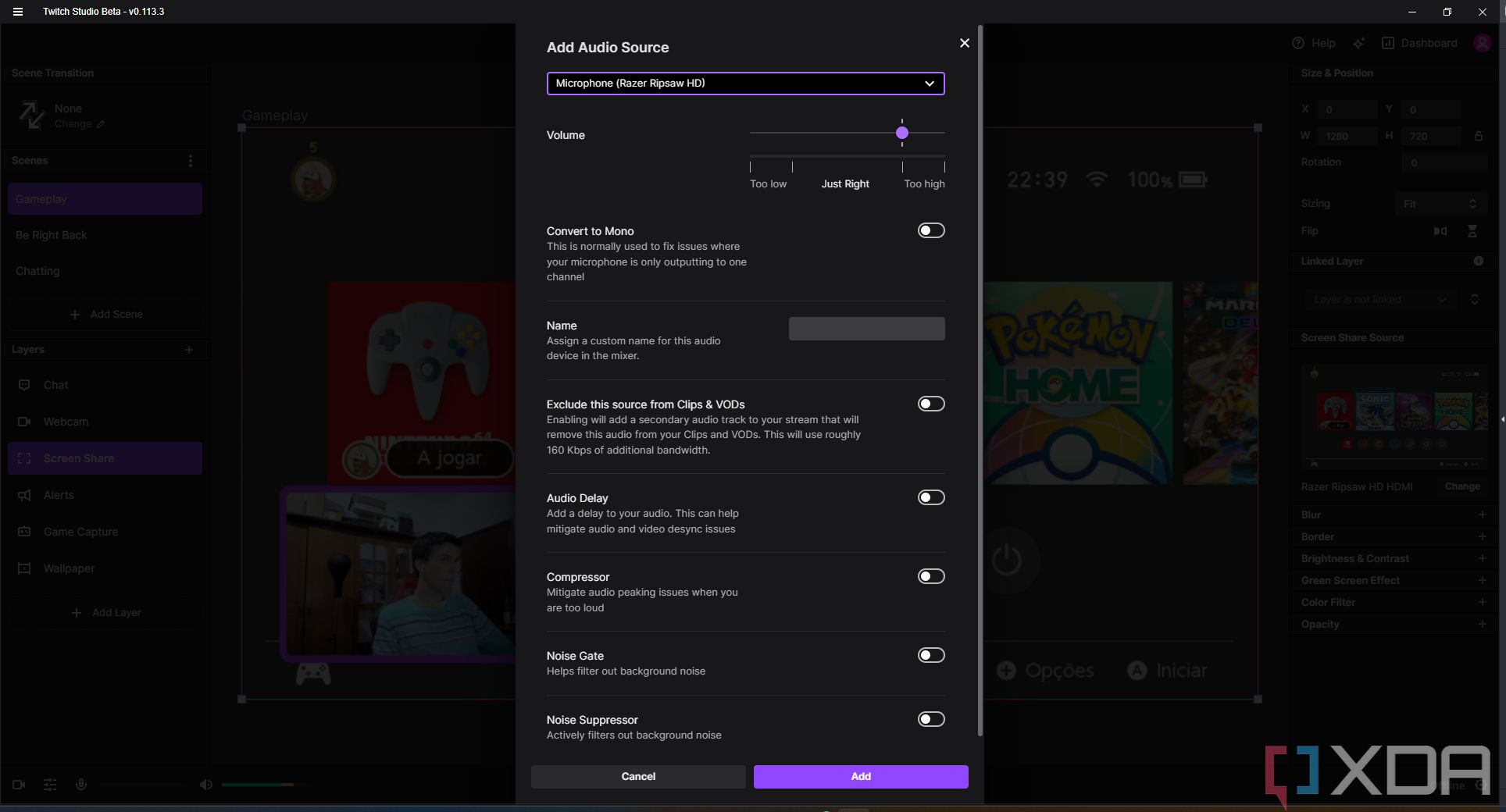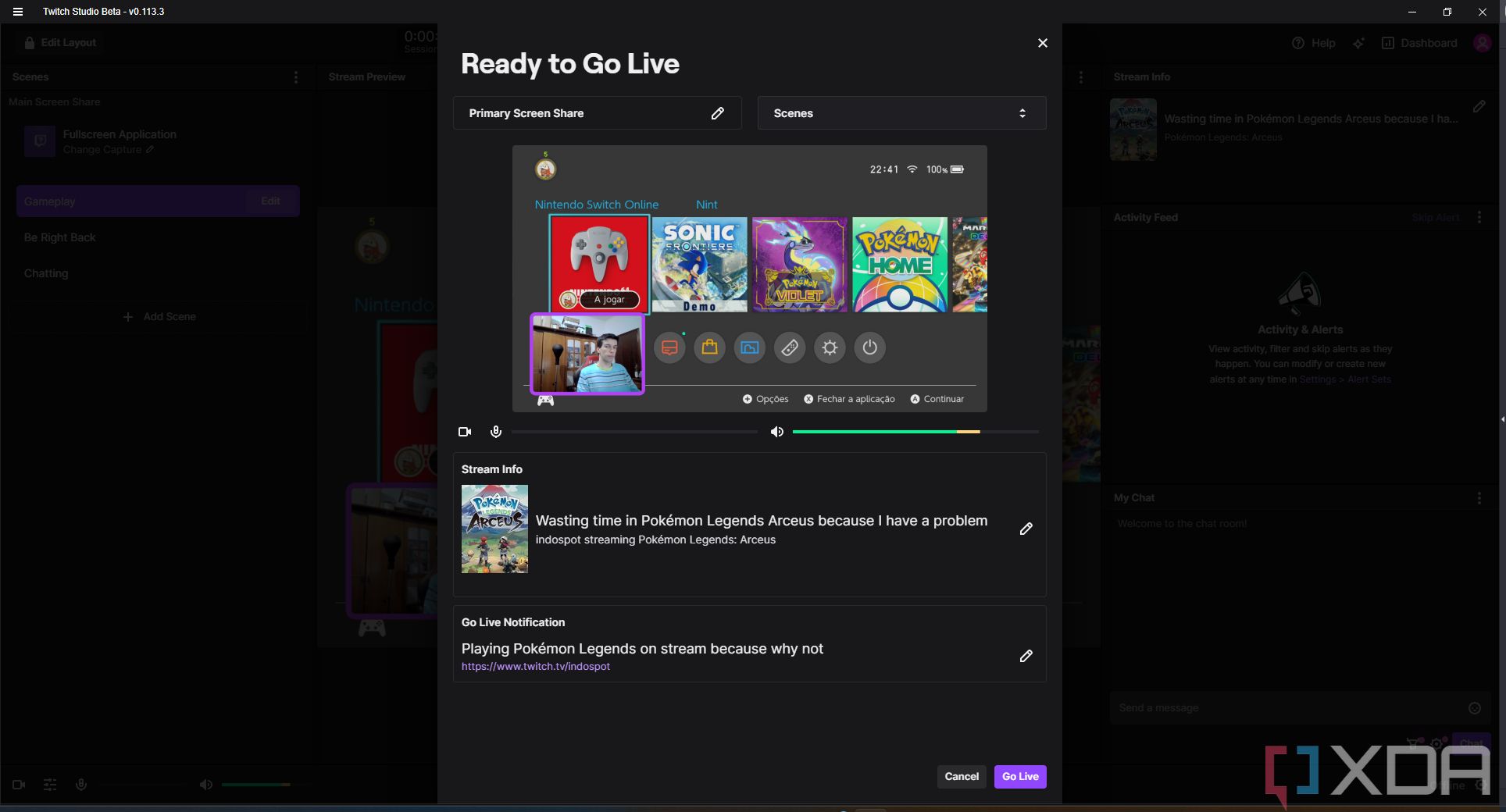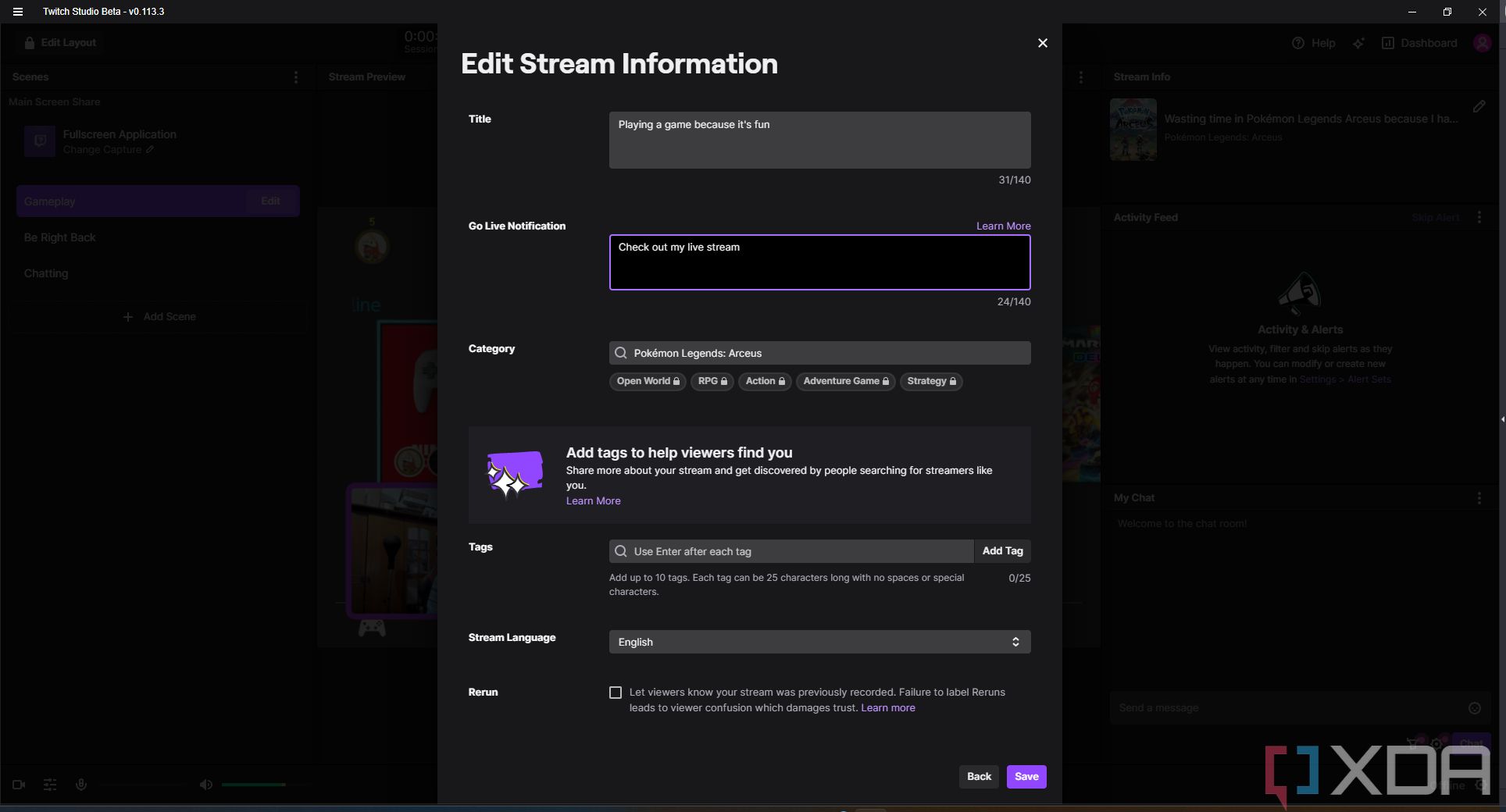Quick Links
Live streaming is one of the most popular forms of entertainment on the internet, and it's grown into a massive market. Because of that, you've probably been tempted to get into streaming yourself, even if you don't intend to make it your day job. Getting started with streaming can feel a bit daunting, but it's not as bad as it seems. And if you're not sure where to start, we're here to help.
There are other platforms for live streaming out there, but Twitch is by far the most popular, so that's what we're focusing on. In general, the same principles will apply to whatever platform you want to use, though of course there will be some differences. Let's get into it.
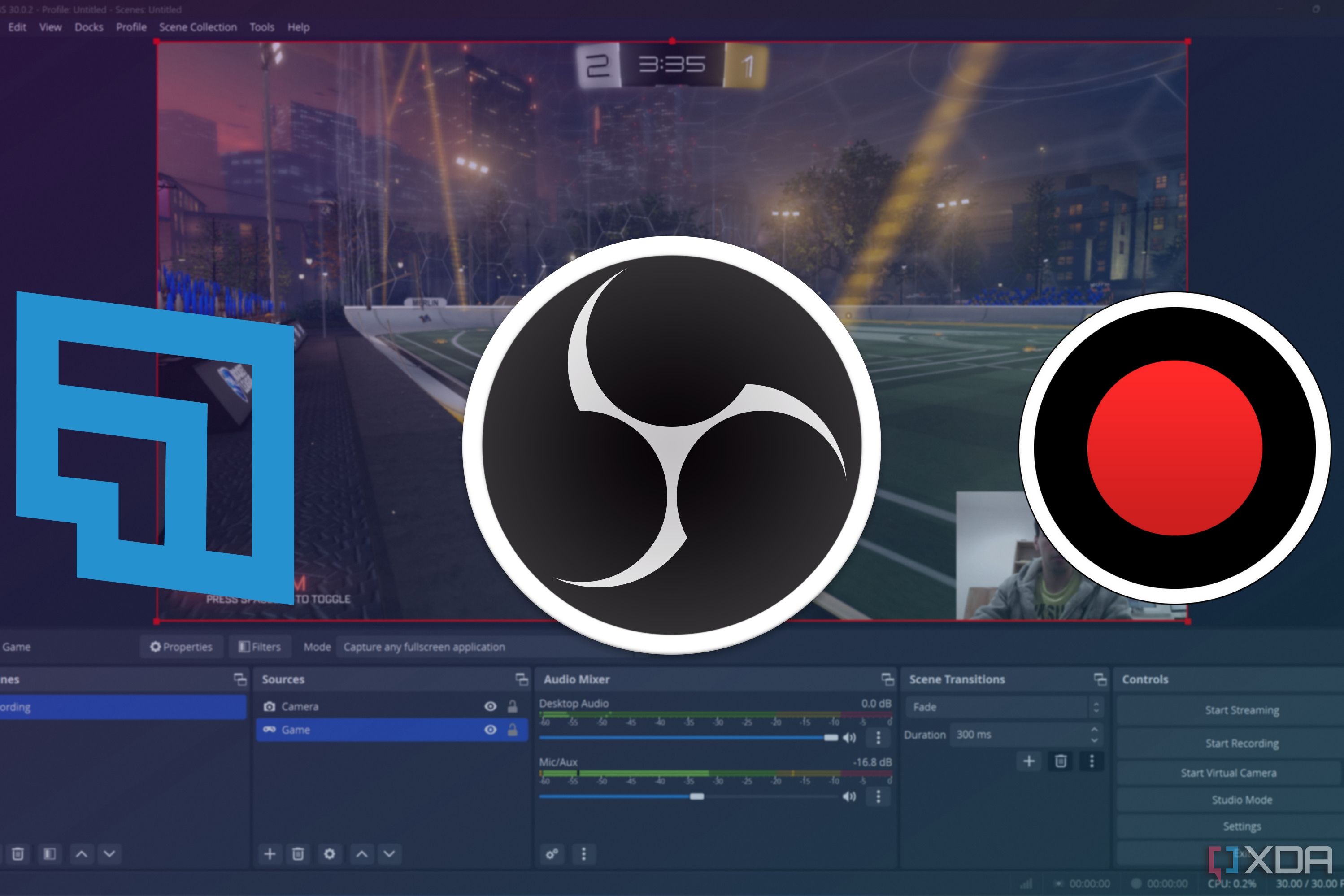
Best game recording software in 2024
You can use a wide variety of software to capture and stream your gaming sessions. here are some of the best.What you'll need
Before you get started with the more technical side of things, there are some pre-requisites and recommendations you might want to check off first. Here's a quick run-down of things you might need:
- A Twitch account
- Streaming software (for this guide, we're using Twitch Studio)
- Second monitor (optional)
- Capture card (for console games)
- A relatively powerful PC
First off, you'll need to create a Twitch account if you haven't already. Simply go to the Twitch homepage, click Sign Up in the top right corner, and enter your details. Fair warning: Twitch is very picky with the password you choose. You'll need to make it long and complex for it to be accepted.
While it's not mandatory, it is extremely helpful to have at least two displays for your setup. More advanced streamers may have even more, but two screens are pretty much the bare minimum so you can have your stream management interface on one screen and whatever you're playing or doing on the other. Of course, if you're just chatting and not sharing your screen, this is less of a necessity. If you're in need of a second screen, we have a roundup of the best monitors you can buy right now, or check out the Samsung Odyssey G7 we listed below.
Depending on what you're trying to do, a capture card may also come in handy. This is mostly important if you want to stream console games so you can connect your console to your PC, so if that's not your use case, it's less of a problem. We have a list of the best capture cards for the Xbox Series X|S, though they should also work for other consoles, too. We also have a recommendation for you below.
-
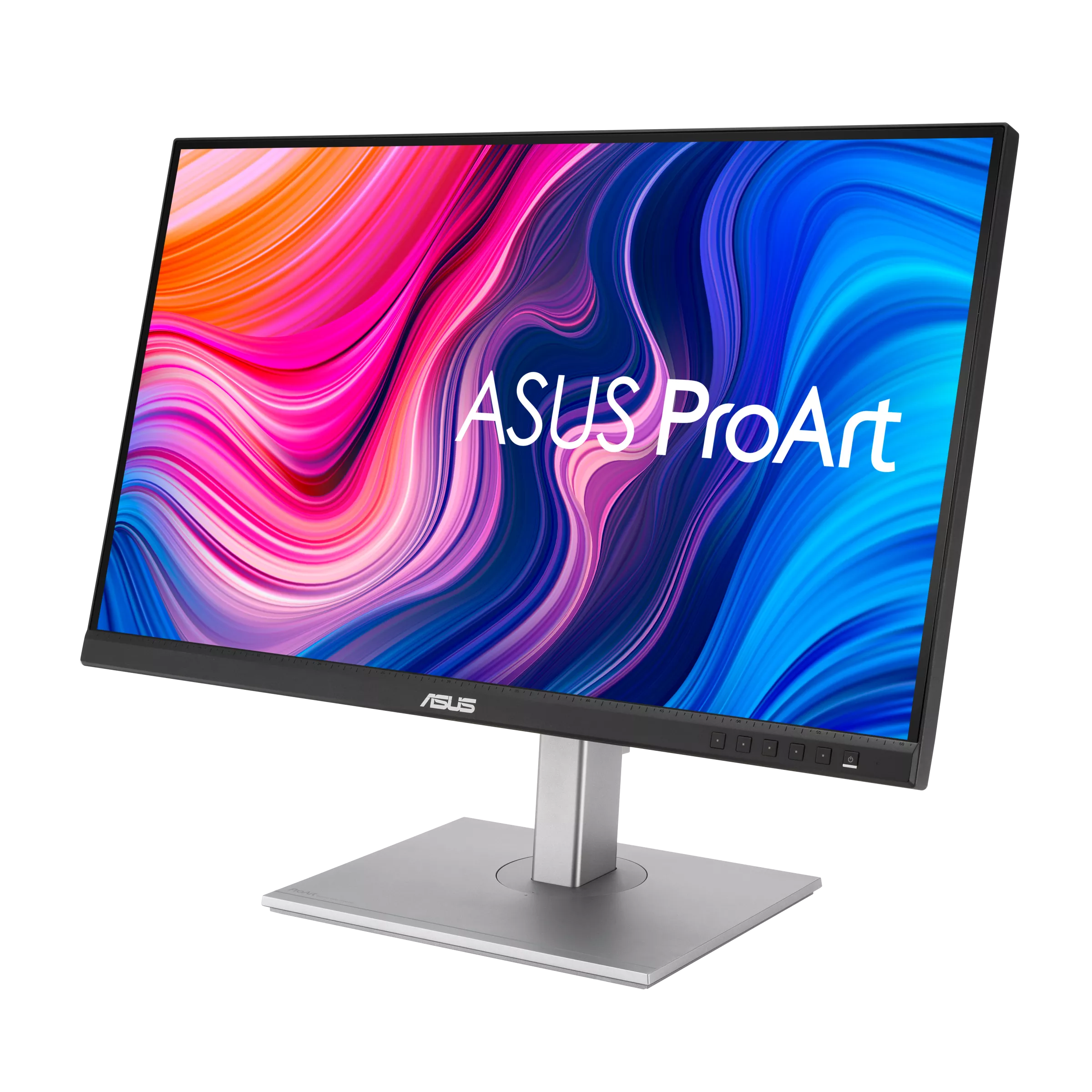
ASUS ProArt PA278CV 27-inch WQHD Monitor
The Asus ProArt PA278CV is a great all-purpose monitor, with great color coverage and accuracy and Quad HD resolution, making it a great screen to help you manage your stream without breaking the bank.
-
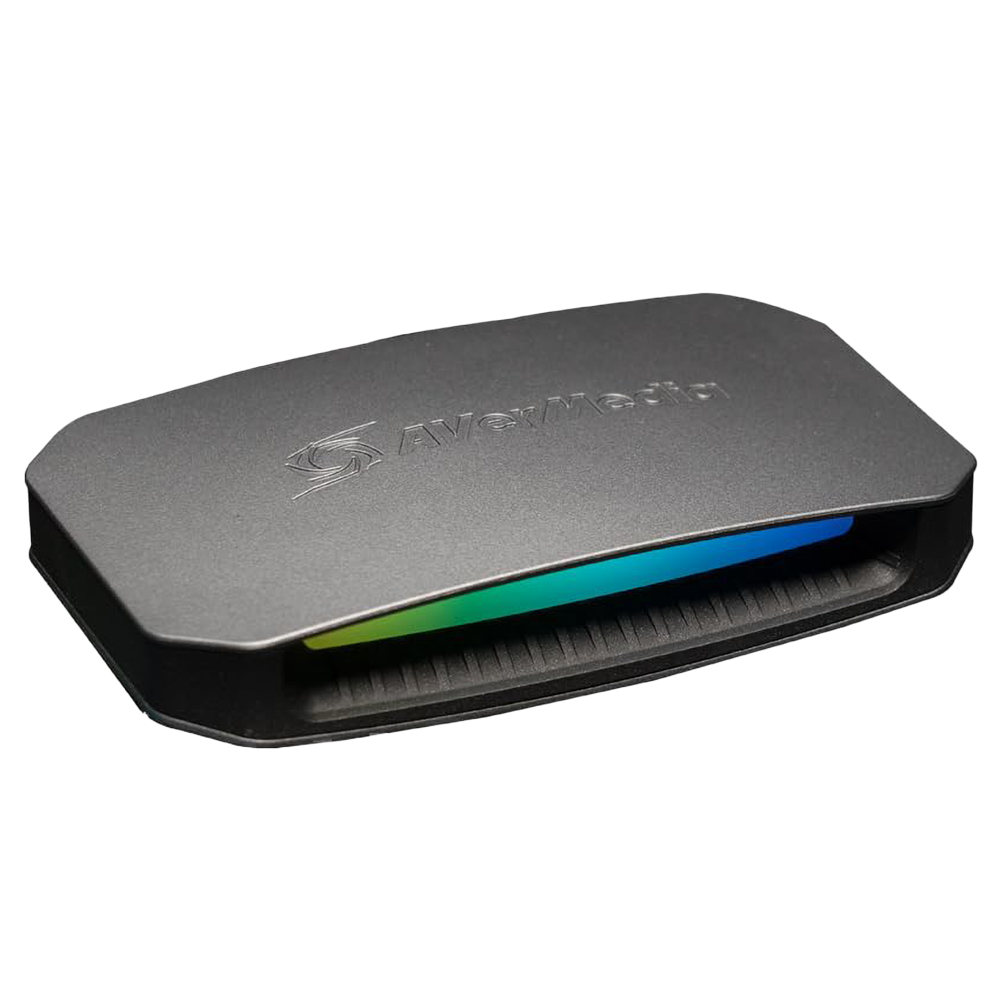
AVerMedia Live Gamer Ultra 2.1
You'll need a capture card if you want to stream your console games, and the AVerMedia Leva Gamer Ultra 2.1 is one of the best options out there, with support for 4K capture at 60FPS, plus 4K 144Hz passthrough.
Finally, you're going to need a decently powerful PC. Live streaming is a somewhat demanding workload, and if you're planning to stream your PC games, you're absolutely going to want a powerful PC. A good idea here is to check out our list of the best laptops for content creators, as they're generally the most suited for this kind of thing. If you're streaming a console game and using a capture card, however, you don't need anything too crazy for basic streaming setups.
With all that out of the way, let's get into how you can start streaming to Twitch from your Windows PC.
How to set up Twitch Studio to stream from your PC
For this guide, we're going to be using the official Twitch Studio app to stream, since it's the official Twitch app and it works the best with this service. This should be the easiest way to do it, but there are many other streaming apps like OBS Studio, Streamlabs OBS, and more, and you can use any of them.
- To download Twitch Studio, simply head to this page and click the Download Twitch Studio button.
- Run the installer and click the Install button.
-
Once it finishes installing, Twitch Studio will launch, and you'll be prompted to sign in to your account. If you've signed in on your web browser, your account will automatically be detected.
- Click Get started to be taken through the initial setup process.
-
The setup process will then ask you to choose a microphone to use for streaming, so you can choose whatever you prefer or leave the default setting if it looks correct to you. You'll then be set up with three different video scenes.
-
During the setup process, a test will determine what quality you should be able to stream at, based on your computer's performance and your internet speed.
Twitch recommends we stream at 720p resolution and 60 frames per second in this case. You can adjust the stream settings manually if you think you should aim for a different resolution, though.
-
Once you've clicked through the setup process, you'll arrive at your streaming studio interface. There's quite a bit going on here, so here are the things you need to pay attention to:
- Scenes - On the left side of the interface you'll see a list with three scenes. These are different views that you can opt to show your audience while streaming. The default gameplay scene will show a large background with your webcam in a small window in the lower left corner, for example. You can customize how the existing scenes look or add new ones, and during a stream, you can switch between them on the fly.
- Stream preview - In the center of the screen, you'll see a big preview of what your stream looks like with the current scene. This is what your audience will see.
- Activity feed - This shows you any activity related to your Twitch followers or subscribers.
- My chat - This shows you the chat for your live stream, so you can see what your viewers are saying in real time.
- Stream settings - Across the bottom, you'll see a small bar with a series of buttons and indicators. This allows you to turn off your webcam, see your volume levels, mute your microphone and speakers, and more. Most importantly, you have the buttons to start streaming, edit your scene, or mute your microphone or output audio.
- Stream info - If you've streamed before, you'll also see information about your current stream information in the top right corner.
That's a fairly short explanation of everything, and with that, you're technically ready to start streaming, but there are a few more things we should talk about.
How to change what you show on stream (edit a scene)
As we mentioned above, by default, the gameplay scene is going to show you a static background, which isn't exactly what you want for gameplay. That's because Twitch Studio is set up to capture gameplay from a game, and if there's no game running, that source will be empty and you'll see your background. To see more about this, click the Edit scene button at the bottom while the gameplay scene is active.
In this view, you'll see all the video layers or sources that are part of this scene, visible on the left side of the screen. By default, you'll see your webcam, chat, alerts, Game Capture, and Wallpaper. You don't need to touch most of these to get started, except maybe Game Capture.
The way this source works is that if you have a full-screen game running on your PC; it's automatically detected by Twitch Studio and shown on stream. That's why it looks static when you first launch it, but you can launch a game on your second screen to see if this is working.
Adding a video layer
If you want to stream a console game or the game you're playing isn't detected, you can add a new video layer for your gameplay. Here's how it works:
-
Click the Add layer button and you'll see a prompt asking what kind of layer you want to add.
- If you want to show a game or app running on your PC, you'll want to choose Screen share here, which is what we'll do here. Click Add.
- On the right side of the window, you'll see under Screen share source that it's set to share a fullscreen application. Click the Change button.
-
Here, you can choose an app/game to share, one of your displays, or a capture card, if you have one connected to your PC.
If your selected source doesn't immediately work, you can click Refresh device under the device preview on the right side.
- If you used your capture card and you notice that it's not visible on the stream preview after you add it, select the layer where your capture card is and change the resolution under Size and position in the top right corner. You can just delete a number and re-enter it, and the video feed will appear as normal.
-
After this, you may notice that your webcam is no longer visible. The order of your video layers is important, and since the screen share is above all your other sources, it will be the only thing visible. On the left side menu, drag your new screen share layer below your webcam and anything else you want to be visible on your stream, and you'll see it reflected right away.
Note that you can also edit the existing Game Capture layer to change the source to another screen or capture card. Click the Edit button on the right side of the window and then Change to choose a new source for that layer.
After this is all done, you can save your scene and go back to the main window.
Changing your audio sources and levels
Another thing you may want to do is change the audio levels and sources on your stream. In the main view of Twitch Studio, there's a bar with stream settings at the bottom, including some audio levels. There's also the audio mixer button, which is the second button from the left, looking like a series of sliders at different levels. Click it and you'll see the audio levels for your microphone but also other audio sources connected to your PC.
By default, all your sources will be set to the same level, but you can mute them or adjust the volume depending on your needs. You can also click Add Audio if you want a new audio source, such as sound from a specific app or input device. If you want to share game audio from a console, you'll need to add that audio source to match the video source we added above.
When you add an audio source, it's added to the audio mixer on the main steaming interface so you can change the audio levels more easily.
How to start a stream on Twitch Studio
Now that you have all your sources ready, you can start streaming.
- Click Start stream at the bottom of the window and you'll be prompted to choose your stream settings.
-
You can change the primary video source and scene before getting started, and also change your stream info and the "go live" notification.
-
You need to enter a title for your stream and select a category. If you're playing a game, the category should be the name of the game you're playing so it's easier for people to find you based on that. Certain categories also automatically add tags to your stream. Finally, you can change the language you're streaming in so you can target the right audience.
- Finally, you can change the notification that's sent to your followers when you go live. Once that's all done, click Go Live and your stream will begin. It will be visible by going to your Twitch profile using a web browser or the Twitch app.
And that's all you need to know to get started with streaming. We didn't dive deep into all the available settings, but this gives you a solid idea of everything you need to know to manage your sources and scenes. As we said, there are many other streaming tools you can use, and while the UI will vary a lot, the basic concepts all apply, like adding and editing sources, changing audio levels, and so on. Twitch Studio is ideal for beginners, but other tools have more advanced options, too.

